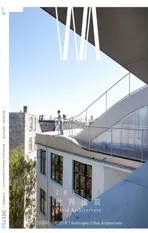科尔多瓦-ReUrbano住宅,墨西哥城,墨西哥
2017-12-26建筑设计卡达瓦尔索拉莫拉莱斯建筑事务所
建筑设计:卡达瓦尔&索拉-莫拉莱斯建筑事务所
Architect: Cadaval & Solà-Morales Architects
科尔多瓦-ReUrbano住宅,墨西哥城,墨西哥
建筑设计:卡达瓦尔&索拉-莫拉莱斯建筑事务所
Architect: Cadaval & Solà-Morales Architects
Cordoba-ReUrbano Housing, Mexico City, Mexico, 2015
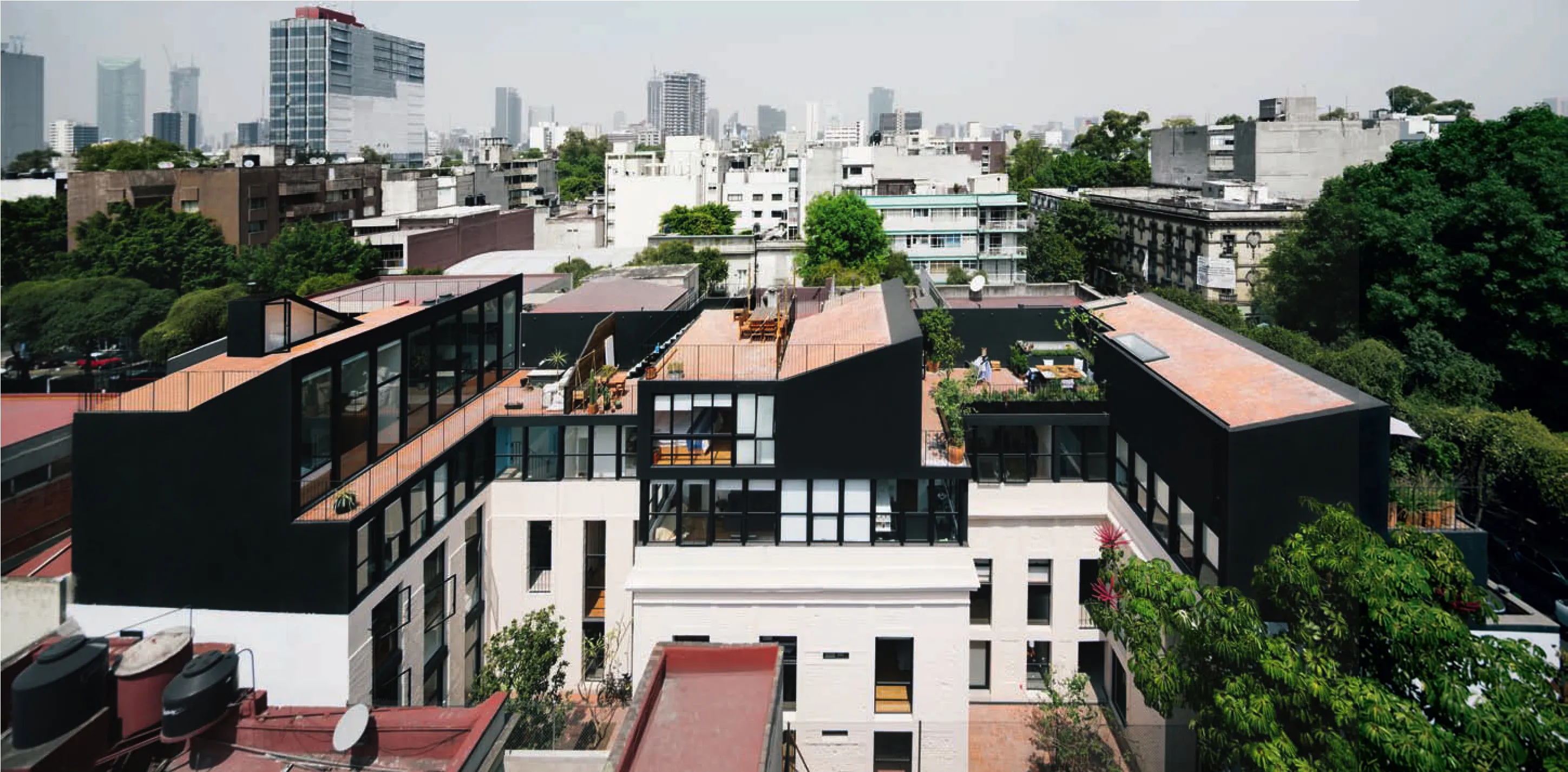
1.2 外景/Exterior views
该建筑位于科洛尼亚洛玛,墨西哥城中心的一片历史街区,由一个名为“城市回收”的初创企业发起。项目建造在一片位列历史遗产的建筑地块之上,其地面层不包含任何停车或者商业空间——这种居住状况在当地文化中一般会被归为下层社会的生存现实,且一般难与提升整体的城市品质产生联系。
这处具有历史价值的建筑地段在其房主去世后被遗弃。ReUrbano发现了它,并委托我们将其改造为一幢住宅楼。设计内容包括9套尺寸、形式不同的住宅以及位于正立面上的商业空间。项目要求我们必须正视建筑的形式价值在城市网格中的角色,并探求遗产的价值以及合理保留、干预的方式。我们试图做出一个审慎的方案,不断地保持着统观全局的视角,从而保证对旧有建筑的空间结构(和本质)表现出足够的尊重。
项目基本完整保留了旧有建筑,超额完成了当地保护机构提出的只保留建筑立面的要求。这一决策基于对每一个现存建筑部件的仔细分析,目的是为了打造一个不同的现实,又使其与原有建筑保持和谐:过去与当下共存,尊重并创造一个新的空间现实;两种建筑拓扑形式各自回应其相应的历史时代,同时相互共存。
建筑平面沿着一条室外斜向走廊展开;通向原有建筑的旧有庭院被复制到了综合体的后端,从而构成了两个核心交通空间围绕两个中庭布置的格局。位于原有住宅后部的加建部分围合了第二个中庭,其选材和形式与既有建筑相似,而采用了当代的技术。
方案也沿着竖直方向生长,在老房子的基础之上增加了两层加建空间。建筑在原有街道平面上下挖了1.5m,并在老房子内加建了一系列夹层,使得原先的单层建筑甚至在部分位置具有了3层室内空间。为了强调建筑的水平性,加建在老房子上的第一层新结构完全被装以玻璃,从而减轻加建部分的视觉重量,同时将旧建筑与新建筑区分开。露台和建筑体量被交替设置在顶层,让人对建筑高度的估计不停变幻,也使得整体建筑体量显得苗条,像是一串小塔楼,而不是一个连续不断的物体。
顶层体量显示了独特的身份,不仅在材料方面与其他层级有所区分,还在颜色上(黑,而不是白,减轻了加建部分的视觉重量)有所不同。建筑材料的使用促进了新老建筑室内独特空间的产生,为迎接独特而多样的生活方式做好了准备。□(张裕翔译)


3 总平面/Site plan
The building is located in the Colonia Roma,a historic neighbourhood in the central sector of Mexico City. The project is built on the initiative of the Urban Recycling start-up; to build housing on a listed building of historical value, without any parking area and incorporating commercial area in the main floor, in a culture where such condition is typically associated to the reality of the lower social classes, and not understood as an indispensable element for building urban quality.
ReUrbano identifies an old house of historical value that was abandoned after the death of its old occupant and engages us to transform it into a housing building. Nine apartments of various sizes and configurations are envisaged, as well as commercial area in the upfront façade. The project forces us to confront the value of architectural form within the urban grid, as well as that of heritage and ways to intervene it. We seek for a discrete project, and we are overseeing to respect the spatial structure (and the essence) of the existing house.
The project maintains almost the overall existing building, beyond the dictum set by the local preservation instances establishing that only the façade needs to be preserved. It is based on a detailed analysis of each of the existing elements,looking forward to generate a different reality, but in harmony with the original building: past and present coexisting, respecting and creating a new reality built up of two architectural typologies which respond to two different historic moments.

4 外景/Exterior view

5 屋顶/Roof view
The layout is structured through an outdoor sidelong corridor; the existing courtyard that provides entrance to the original house is replicated at the rear back, and therefore the two main cores to access the units are now related to each of those patios. The addition to be built on the back of the house, draws this second patio and has the form and materiality of the existing house, although it uses current technologies.
The project also grows in height, both within the existing building and by the addition of two new floors to the old house. Digging 1.5m below the street level, and building a series of intermediate levels inside the house, the interior of the existing house transforms from its original single level to up to 3 levels at some points. To highlight horizontality, the façade of the first floor to be built on top of the existing building is fully glazed, in order to lighten up the weight of the new addition,as well as to differentiate the original building of the new intervention. A succession of terraces and built volumes modifies the perception of the overall building' height and slims the project, to appear as a chain of small towers and not as a continuous solid.
The volumes on the upper level have their own identity, both by the material itself, and by the colour (black, not white, to help lighten the weight of the addition). The materials enhance the generation of unique spaces inside the old and the new structure, ready to be appropriated by individual and different lifestyles. □
项目信息/Credits and Data
合作者/Collaborators: Olivier Arditi, Catherine Nguyen
结构工程/Structural Engineering: Ricardo Camacho
建筑面积/Floor Area: 2200m2
竣工时间/Completion: 2015
摄影/Photos: Miguel de Guzmán

6 屋顶平面/Roof plan

7 屋顶/Roof view
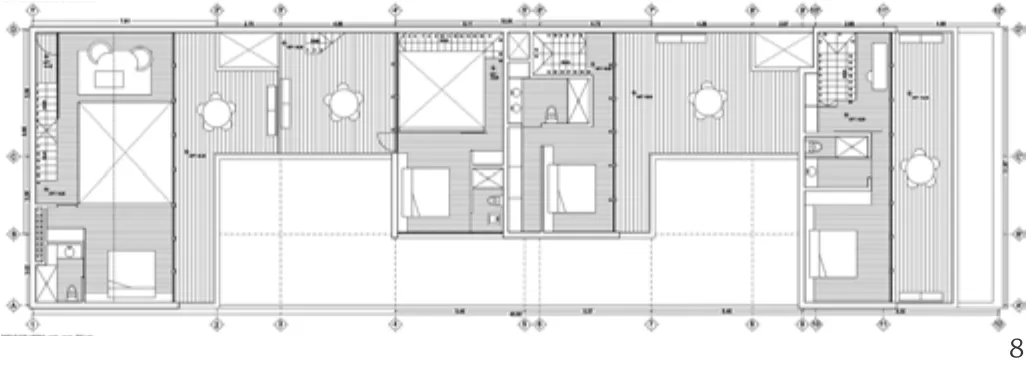
8 四层平面/Floor 3 plan

9 三层平面/Floor 2 plan

10 二层及其夹层平面/Floor 1 and mezzanine plans
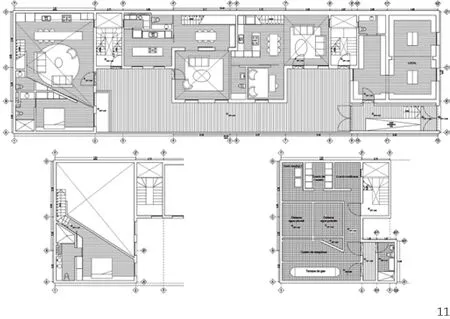
11 首层及其夹层平面/Ground floor and mezzanine plans

12.13 外景/Exterior views
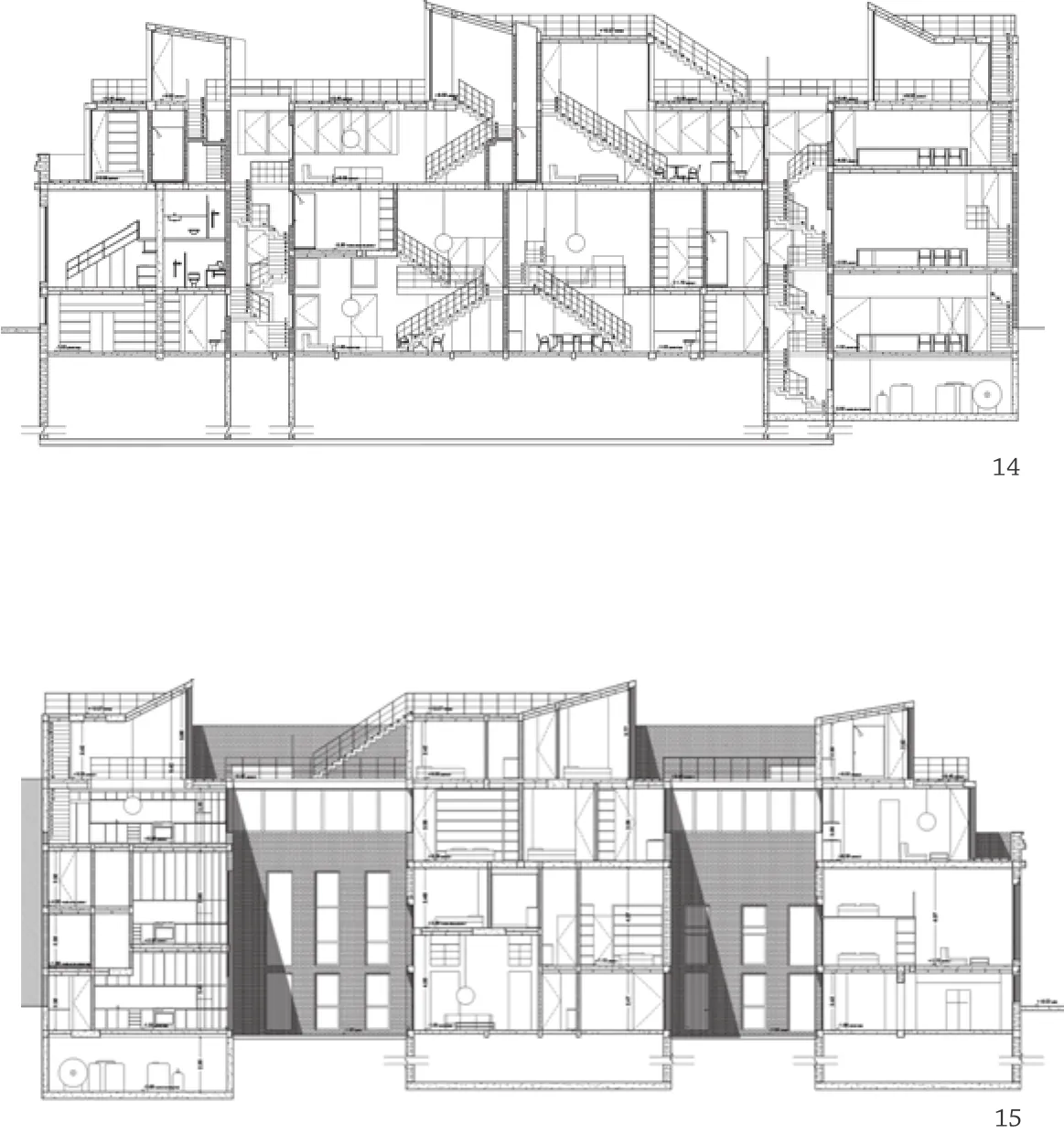
14.15 纵剖面/Longitudinal sections
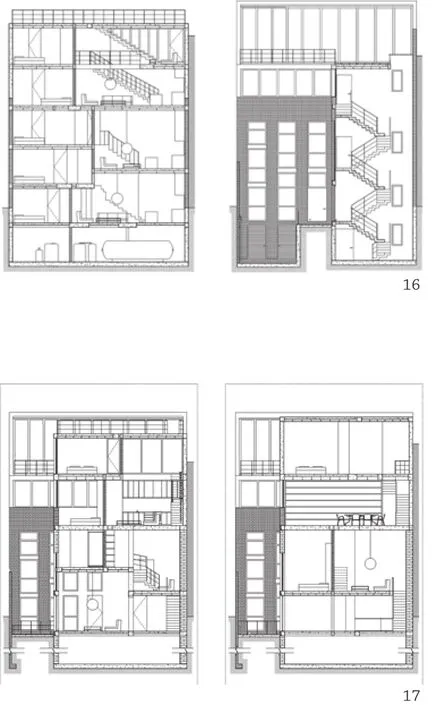
16.17 横剖面/Transversal sections
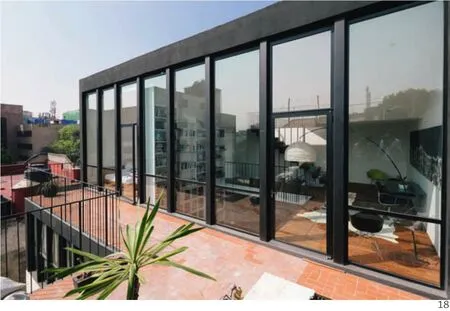
18 露台/Terrace
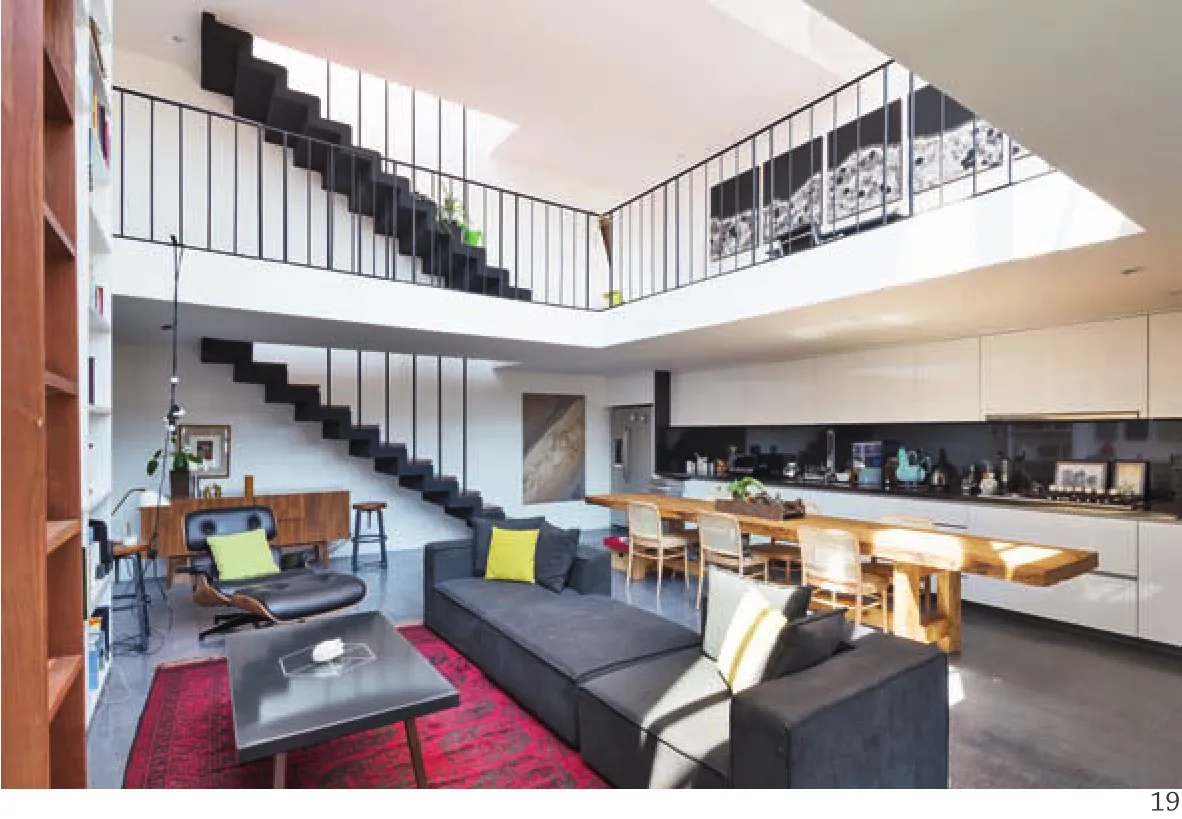
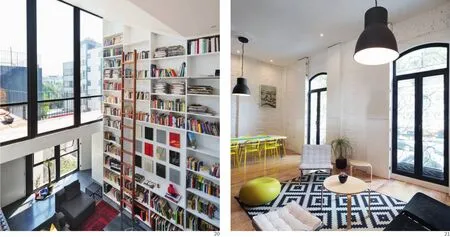
19-21 内景/Interior views
